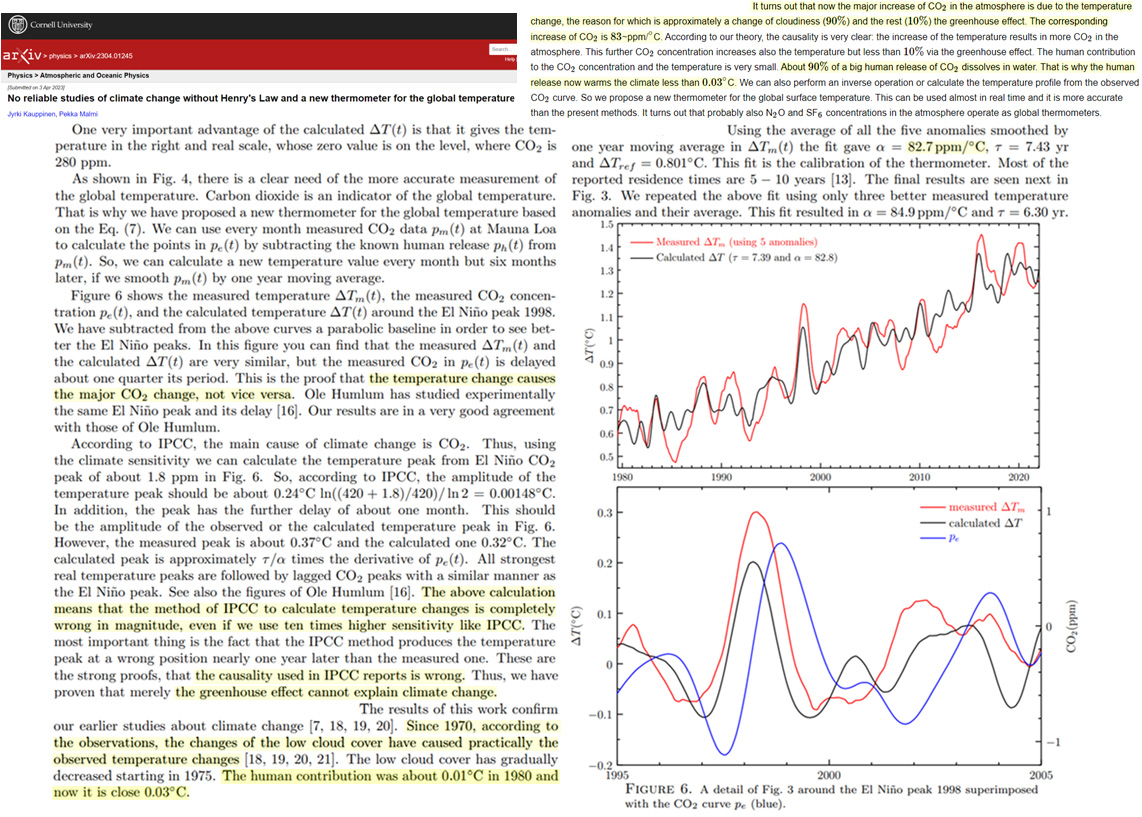New Study: 90% Of Recent Warming Is From Shortwave Cloud Forcing…Humans Contributed 0.03°C
By Kenneth Richard on 8. May 2023
Data analysis again reveals the increase in absorbed shortwave forcing has been driving modern climate change since the 1970s. CO2 changes are more of an effect than a cause of temperature increases.
Scientists have for years been pointing to the causality sequencing problem inherent in the claim that CO2 is the driver of temperature changes.
The sequencing observation clearly supports the conclusion that variations in the CO2 growth rate lag changes in temperatures by about 4-10 months (Humlum et al., 2013, Koutsoyiannis and Kundzewicz, 2020, Koutsoyiannis et al., 2022). Effects can only lag – not lead – causes.

Wang et al. (2013) further estimate only 10% of the variance in global CO2 growth rates can be explained by fossil fuel emissions. Instead, there is a “strong and persistent coupling (r² ≈ 0.50) between interannual variations of the CO2 growth rate and tropical land-surface temperature during 1959-2011.”
Image Source: Wang et al., 2013
Building on this temperature→CO2 directional causality, Jyrki Kauppinen and Pekka Malmi (2023), Department of Physics and Astronomy, University of Turku, have used existing CO2 and temperature data to calculate an 83 ppm CO2 increase associated with a 1°C surface temperature increase. The authors suggest this 83 ppm/°C value is consistent with Henry’s Law and CO2 residence time calculations.
Kauppinen and Malmi further assess the warming in recent decades has been predominantly (90%) driven by the increase in absorbed solar radiation due to the downward trend in cloud cover.
The greenhouse effect has contributed just 10% to the warming trend, and the human contribution to the CO2 concentration changes is only a fraction (hundredths of a degree) of that 10% impact – about 0.03°C since 1980.
Thus, not only is the “causality used in IPCC reports wrong,” but “the greenhouse effect cannot explain climate change.”
“Since 1970, according to the observations, the changes of the low cloud cover have caused practically the observed temperature changes. The low cloud cover has gradually decreased starting in 1975. The human contribution was about 0.01°C in 1980 and now it is close 0.03°C.”

